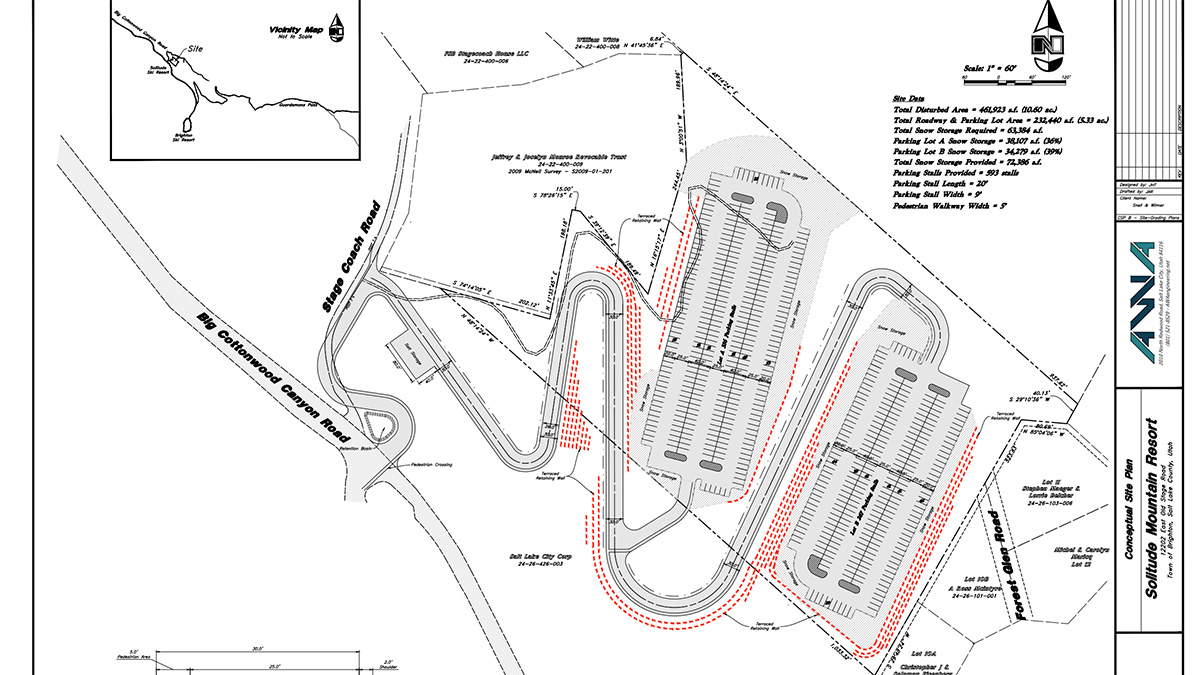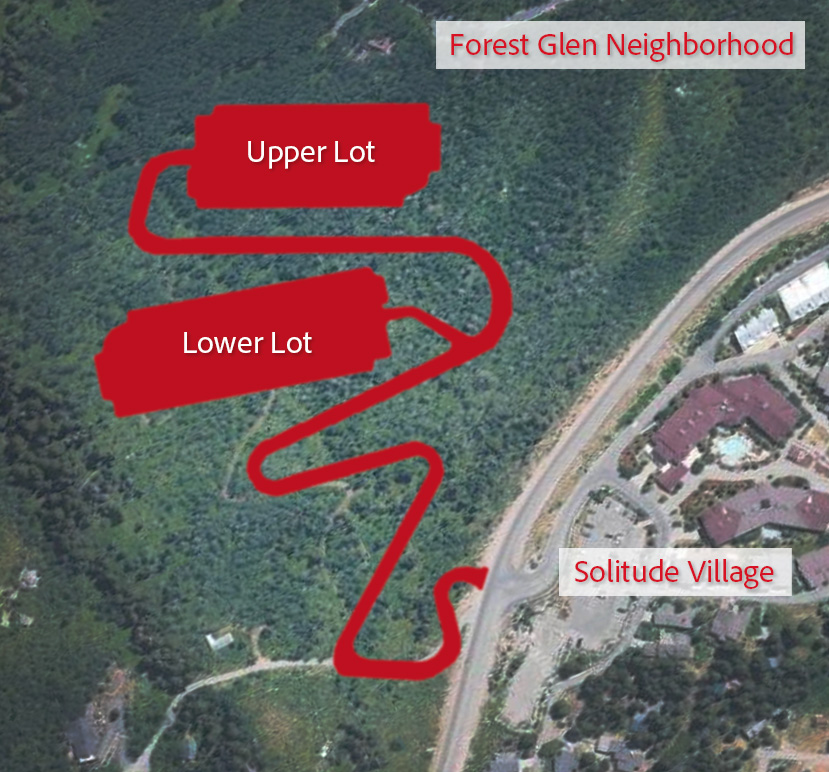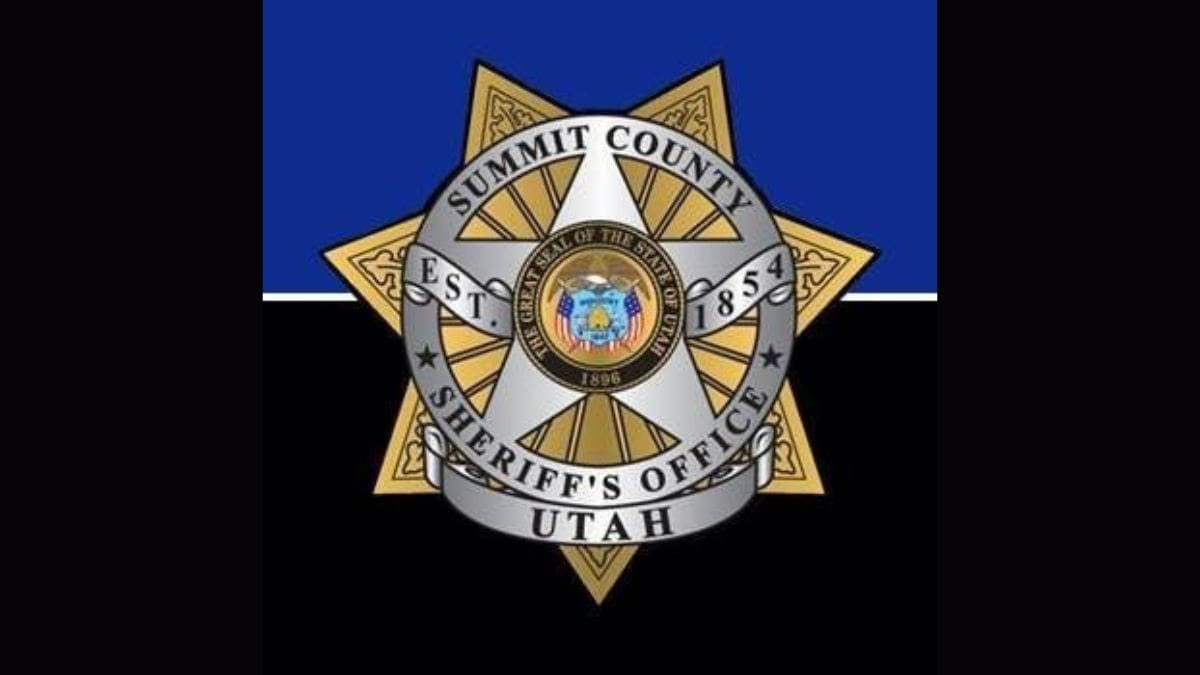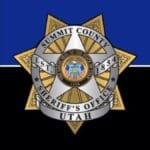Growth
Solitude’s proposed 593-car parking lot in Big Cottonwood Canyon sparks backlash from Brighton locals and conservationists

Plans for Solitude's proposed parking lot in Big Cottonwood Canyon. The lot would have space for 593 cars. Photo: Solitude Mountain Resort
BRIGHTON, Utah — A proposed 593-spot parking lot by Alterra-owned Solitude Mountain Resort has ignited criticism from conservation advocates, nearby residents, and public officials concerned about its environmental and community impacts in Big Cottonwood Canyon.
The project—proposed across SR-190 from Solitude Village—would replace a prominent stand of quaking aspens with an upper and lower asphalt lot, road and 40-foot retaining wall, dramatically altering the canyon’s visual and ecological character. The plan is under review by the Town of Brighton’s Planning Commission and may be voted on as soon as mid-June.
Doug Tolman, senior policy associate with Save Our Canyons, said the lot would disturb 14.5 acres, fragment wildlife habitat, and create a four-way intersection likely to worsen traffic—particularly for Brighton Resort skiers—while offering limited public benefit. The group criticized Solitude for prioritizing expansion over sustainable transit or visitor limits, saying the proposal is “not a traffic solution; it’s an expansion plan.”
Brighton resident Ross McIntyre said he is opposed to the parking lot for many reasons. “My property abuts the proposed project, but I also have some serious safety concerns,” said McIntyre, whose home sits just behind the proposed development site. He’s among several local landowners raising red flags about increased erosion, fire danger, and traffic congestion.

Solitude submitted its initial conditional use permit (CUP) application to the Greater Salt Lake Municipal Services District in January. The district deemed the application incomplete in February, asking for clarification on access through city-owned land and discrepancies in parcel size. The resort responded last month, through a revision outlined by their lawyer Wade Budge, reducing the lot’s size from 720 to 593 stalls and noting the parcel is closer to 11.4 acres, not the 12.58 initially advertised.
Traffic concerns
One of McIntyre’s main safety concerns, not being addressed by the plans, is how resort guests would cross SR 190. According to him, Solitude’s current solution of parking lot shuttles and a crosswalk would be dangerous and also make traffic worse.
“Imagine shuttle busses continuously crossing that road and people walking across just by using a crosswalk?” McIntyre said.
SR-190, the primary artery through Big Cottonwood Canyon, has a 45 mph speed limit and sees heavy traffic throughout the day—particularly during the morning and evening rush—due in part to its role as the main access route to Brighton Resort.
Jeff Carroll, Solitude’s vice president of marketing and guest experience, told the Salt Lake Tribune the resort sees the project as a public benefit that could reduce unsafe roadside parking and help manage winter crowds. Roadside parking along SR-190—particularly in peak ski season—has long been a safety concern and a traffic bottleneck. The new lot, Carroll said, is intended to replace and consolidate those roughly 240 informal spaces into a designated area off the main road.
Should the parking lot gain approval, it may not mean the road-side parking is actually eliminated. The spots are currently managed by the town of Brighton and they cost $10 a day. They are used by a mix of resort-goers and backcountry skiers.
McIntyre said that Solitude’s application doesn’t specify approval of the lot means road side parking will go away and jurisdiction actually lies with the town of Brighton, which has given no indication that it plans to eliminate as much as $2,400 a day in revenue.
According to UDOT traffic information, the canyon can handle 1,200 cars per hour under optimal conditions, during peak traffic hours that rate slows to near 300 cars per hour. That means adding close to 600 cars in Solitude’s proposed lot could add close to two hours to an already congested commute.
Municipal process and access are among other concerns
The site sits within Salt Lake City’s watershed and it was recently acquired by Alterra Mountain Company, Solitude’s parent company, from the longtime Dungey family, residents of Big Cottonwood Canyon. Tolman and others say a neighbor had tried for over 20 years to purchase the land for conservation, only to lose out to the resort.
Tolman also said the project has illuminated gaps in the town’s newly adopted code, contributing to a murky review process.
“Our read of the code and what we’re hearing from residents and council members don’t completely align,” he said. “We’re still trying to confirm what the full process will look like after the planning commission makes its decision.”
The incorporated Town of Brighton was created on January 1, 2020 after its 260 full-time residents voted to incorporate in 2018.
Access to the property was another main concern for Brighton’s planners.
Access to the proposed parking lot would cut through a watershed established by Salt Lake City. Save Our Canyons’ estimates the proposed access road cuts through a thousand feet of the city’s land.
The Salt Lake Tribune reported Public Utilities Director Laura Briefer said she told resort operators that they would not be allowed to cross the city’s land to build or access a parking lot.
“We have not given permission to Solitude,” she told the Tribune. “Nor are we obligated to.”
Briefer added parking lots tend to be a source of water pollution and they accelerate runoff and reduce groundwater recharge. Briefer said several Brighton community members she spoke with also had reservations about the project’s impact on canyon conservation.
Environmental Concerns
The proposed lot site threatens thriving stand of quaking aspens—an ecologically important species that serves as a natural firebreak, supports diverse wildlife, and holds cultural significance in Big Cottonwood Canyon, according to Save Our Canyons. Information on their website says aspen populations have declined for decades due to climate change and human activity, contributing to larger wildfires and reduced habitat diversity. The area is already classified as “Very High” wildfire risk by the State of Utah, and removing fire-resistant trees while introducing more vehicles and human presence could heighten that risk.
Additionally, the site sits above the Mill F Fork of Big Cottonwood Creek, raising concerns about downstream water quality. While engineering strategies may help minimize harm, paved surfaces inevitably increase erosion, and expanded snow removal efforts will likely introduce more salt into the sensitive watershed.
Brighton town officials said under Utah law, Brighton’s planning commission must approve the application unless it finds the project’s impacts cannot be “reasonably mitigated.” That narrow standard has left some residents worried that public input may carry less weight than expected.
“This is an important moment for the canyon,” Tolman said. “We want to make sure development decisions reflect both the ecological needs of the area and the voices of the people who live here.”
The meeting schedule for the town of Brighton can be found here.




















